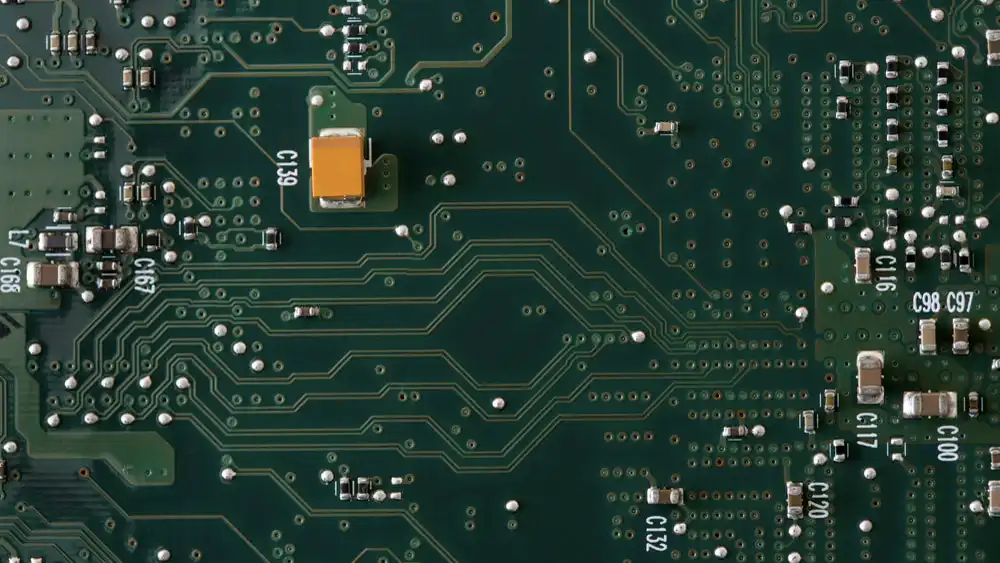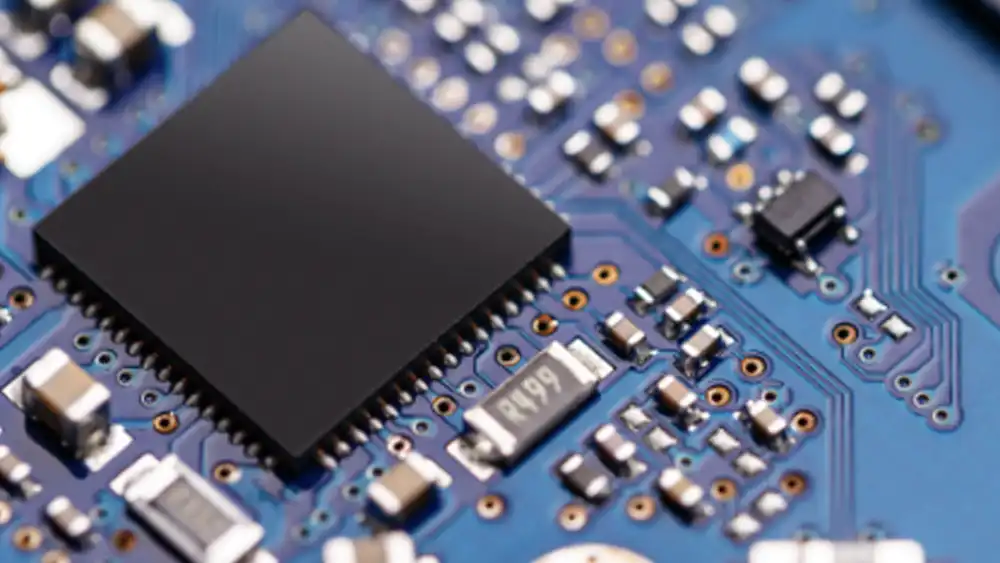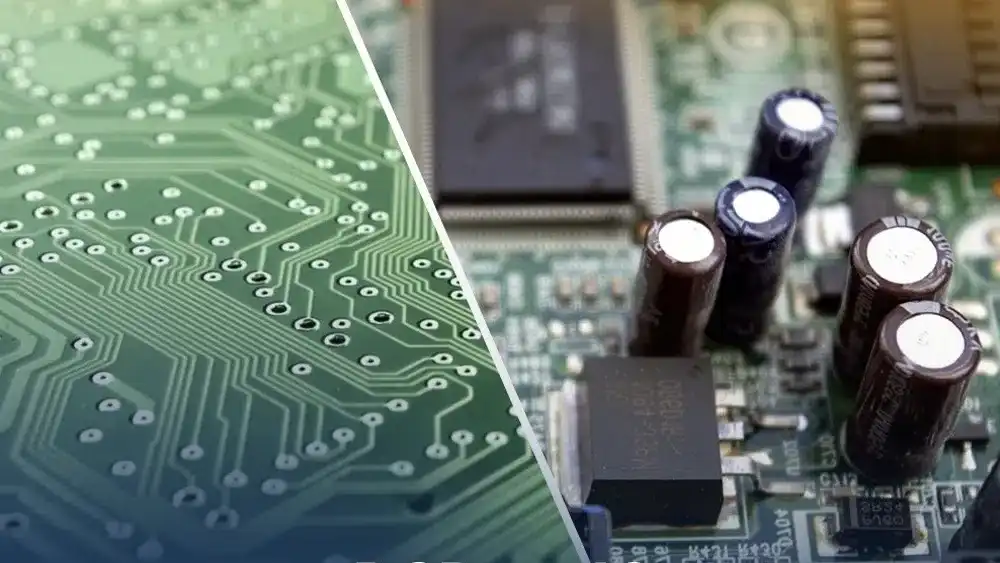The world of electronics is brimming with complex components, and at the heart of it all lies the integrated circuit (IC) board. This ubiquitous marvel plays a critical role in everything from your smartphone to your toaster. But what exactly is an IC board, and how does it function?
In this blog post, we’ll delve into the fascinating world of IC boards, exploring their key features, applications, and common types.
What is an Integrated Circuit Board

An integrated circuit board, often shortened to PCB (Printed Circuit Board), is a foundation upon which various electronic components are mounted and interconnected. It acts as a platform for these components to communicate and function together. Imagine a city layout – the IC board is like the streets and avenues, while the electronic components are like buildings and houses. Each component has a specific role, and the connections between them determine the overall functionality of the electronic device.
High Speed Circuit Board Signal Integrity

High-speed circuit board signal integrity is a critical concept in the design and performance of modern electronic devices. As signal speeds increase, maintaining signal fidelity becomes increasingly challenging. Signal integrity refers to the ability of an IC board to transmit signals with minimal distortion or attenuation.
Factors that can affect high-speed circuit board signal integrity include:
- Impedance: Impedance is the opposition to current flow in an AC circuit. It’s measured in ohms (Ω) and is analogous to resistance in DC circuits. In a high-speed circuit board, the characteristic impedance of the transmission lines (the traces that carry signals) must be carefully controlled to ensure proper signal transmission. Impedance mismatches can cause signal reflections, which can distort the signal and lead to errors.
- Crosstalk: Crosstalk is the unwanted coupling of electrical signals between adjacent conductors on a PCB. It occurs due to the capacitive and inductive coupling between the traces. Crosstalk can cause noise and interference in the signals, leading to data errors.
- Grounding: Proper grounding is essential for maintaining signal integrity. A good grounding system provides a low-impedance path for returning current to the power supply. Poor grounding can lead to ground loops, which can induce noise into the signals.
- Power supply noise: Noise from the power supply can couple onto the signal lines and degrade signal integrity. To minimize power supply noise, proper filtering and bypassing techniques are necessary.
Techniques to improve high-speed circuit board signal integrity:
- Controlled impedance routing: PCB layout techniques such as trace width control, spacing control, and the use of impedance planes can help to control the characteristic impedance of the transmission lines.
- Differential signaling: Differential signaling is a technique where a complementary signal is transmitted on a second conductor. This can help to reduce the effects of common-mode noise, which is noise that appears on both signal lines.
- Shielding: Shielding can be used to isolate signal lines from external noise sources. Shielding can be implemented using metal cans, conductive enclosures, or ground planes.
- Termination: Signal lines can be terminated with their characteristic impedance to prevent signal reflections. Termination can be implemented using resistors or special termination components.
By carefully considering these factors and employing appropriate design techniques, engineers can create high-speed circuit boards that meet the demanding signal integrity requirements of modern electronic devices.
Integrated Circuit vs Printed Circuit Board

Integrated circuits (ICs) and printed circuit boards (PCBs) are fundamental building blocks in electronics, but they serve distinct purposes. Here’s a breakdown to clarify the difference:
Integrated Circuit (IC):
- Also known as a microchip, computer chip, or simply chip.
- Miniaturized electronic device: Contains a dense network of electronic components like transistors, resistors, and capacitors etched onto a single silicon chip.
- Functionality: Performs a specific electronic function, like processing data, amplifying signals, or controlling memory. Examples include CPUs, memory chips, and graphics cards.
- Think of it as: A complex miniature circuit housed in a tiny package.
Printed Circuit Board (PCB):
- Also known as a circuit board.
- Physical platform: Made of a laminate material (often fiberglass) with copper tracks etched onto its surface.
- Functionality: Provides a platform to mount and interconnect various electronic components, including ICs, resistors, capacitors, and connectors. These components are soldered onto the copper tracks.
- Think of it as: A city layout with roads (copper tracks) where buildings (electronic components) are placed and interconnected.
Here’s an analogy:
- Imagine a house: The house itself is the PCB, providing the physical structure.
- The electrical wiring in the house: This represents the copper tracks on the PCB, allowing for electrical connections between components.
- The various appliances and devices in the house: These are like the individual electronic components mounted on the PCB, each with its own specific function.
- A specific circuit within an appliance: This would be similar to an IC, a miniaturized version of a circuit performing a specific task.
Integrated Circuit vs Printed Circuit Board
Here’s a table summarizing the key differences between Integrated Circuits (ICs) and Printed Circuit Boards (PCBs):
| Feature | Integrated Circuit (IC) | Printed Circuit Board (PCB) |
|---|---|---|
| Type | Miniaturized electronic device | Physical platform |
| Components | Contains a dense network of electronic components (transistors, resistors, capacitors) etched onto a silicon chip | Provides a platform to mount various electronic components |
| Functionality | Performs a specific electronic function (data processing, signal amplification, memory control) | Interconnects various electronic components to enable overall functionality |
| Analogy | Complex miniature circuit housed in a tiny package | City layout with roads (copper tracks) where buildings (electronic components) are placed and interconnected |
| Examples | CPU, memory chip, graphics card | Simple single-layer board, complex multi-layer board |
| ICs on PCB | Multiple ICs can be mounted on a single PCB |
Key Distinction:
- An IC is a complete miniaturized circuit, while a PCB is a platform for interconnecting various electronic components, including ICs.
Additional Points:
- A PCB can have multiple ICs mounted on it, along with other discrete components.
- The complexity of a PCB can vary greatly, from simple single-layer boards to complex multi-layer boards with high-speed capabilities.
Integrated Circuit Boards – Applications
In our previous exploration, we unraveled the basics of integrated circuit boards (IC boards). Now, let’s delve deeper into their diverse applications and explore some common troubleshooting techniques.
Applications of IC Boards:
IC boards are the backbone of modern electronics, with applications spanning across various industries:
- Consumer Electronics: Smartphones, laptops, tablets, televisions, gaming consoles – all rely on IC boards to function. They house the processors, memory, and other crucial components for these devices.
- Computers: The motherboard, the heart of a computer, is a complex IC board housing the CPU, RAM, and other essential components that enable data processing and communication.
- Industrial Automation: Industrial robots, control systems, and automated machinery heavily rely on IC boards for signal processing, motor control, and sensor interfacing.
- Medical Devices: Pacemakers, defibrillators, and other medical equipment utilize IC boards for precise monitoring and control of vital functions.
- Automotive Electronics: Modern cars are packed with IC boards controlling various functions, from engine management and safety systems to infotainment units.
Troubleshooting IC Board Issues:
Despite their robustness, IC boards can sometimes malfunction. Here are some common issues and troubleshooting tips:
- Component Failure: Individual components on the board can fail due to overheating, wear, or manufacturing defects. Visual inspection can sometimes reveal burnt or damaged components. A qualified technician can diagnose and replace faulty components.
- Signal Integrity Issues: Noise, crosstalk, and improper impedance can disrupt signal transmission. Reviewing the PCB design and employing shielding techniques might be necessary.
- Power Supply Problems: Faulty voltage regulators or power supply components can cause malfunctions. Checking voltage levels with a multimeter can help identify the culprit.
Remember: Troubleshooting IC boards can be complex and requires specialized knowledge and tools. If you suspect an issue with your IC board, it’s best to consult a qualified electronics technician.
Conclusion
The journey through the world of integrated circuit boards (IC boards) has hopefully shed light on these remarkable marvels of miniaturization and functionality. We’ve explored their fundamental building blocks, diverse applications, and the intricacies of high-speed signal integrity.
From powering our smartphones to enabling complex medical devices, IC boards are the unsung heroes of modern electronics. Understanding their role empowers you to appreciate the technology behind everyday devices and make informed choices when purchasing them.
Ready to harness the power of IC boards for your next project?
Weishi Electronics offers a comprehensive selection of high-quality integrated circuit boards, catering to a wide range of applications. Their team of experts can guide you through the selection process and ensure you get the perfect IC board for your needs. Visit weishielectronics.com today to explore their extensive inventory and request a quote for your specific requirements.
Together, let’s leverage the power of IC boards to build the future of technology!